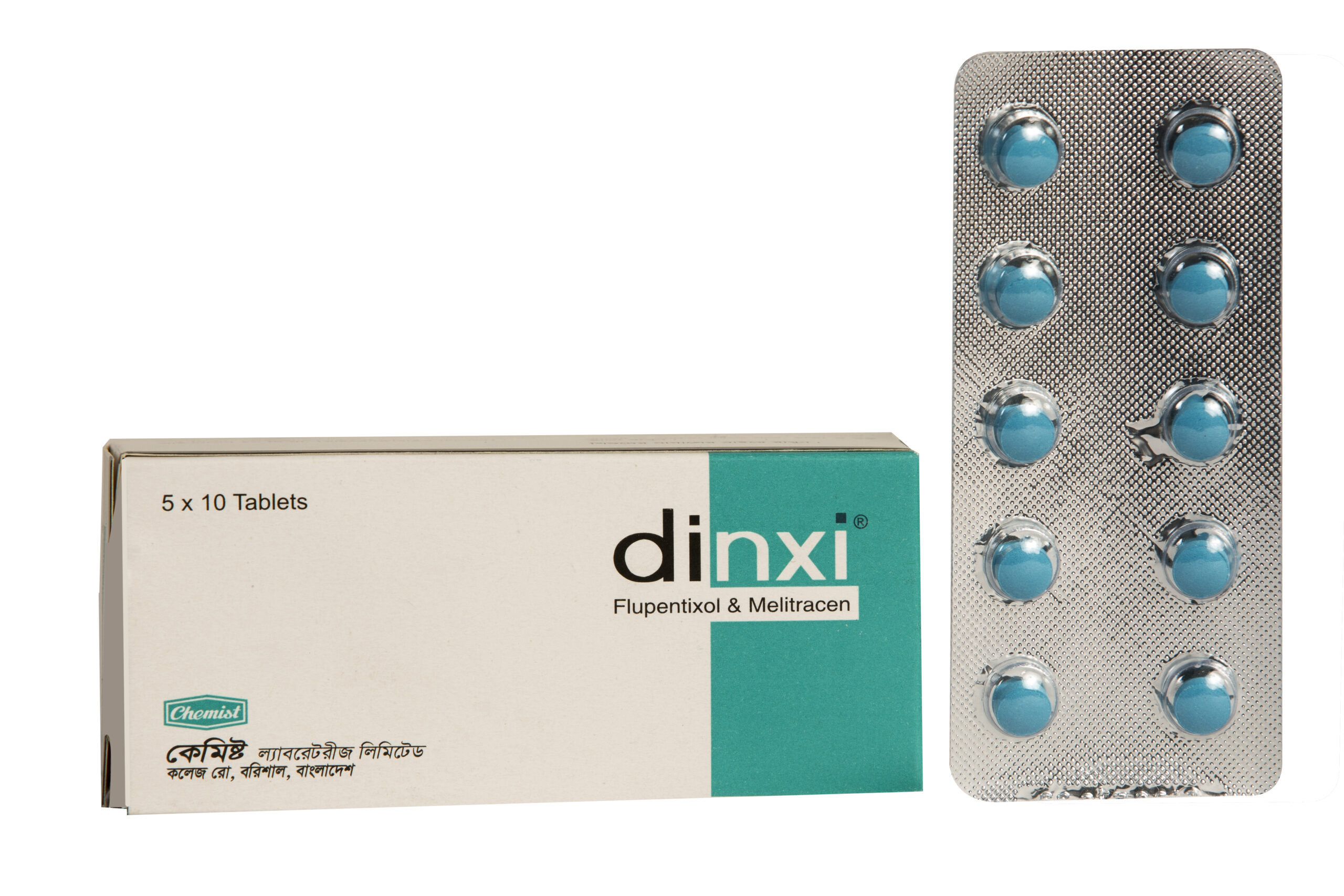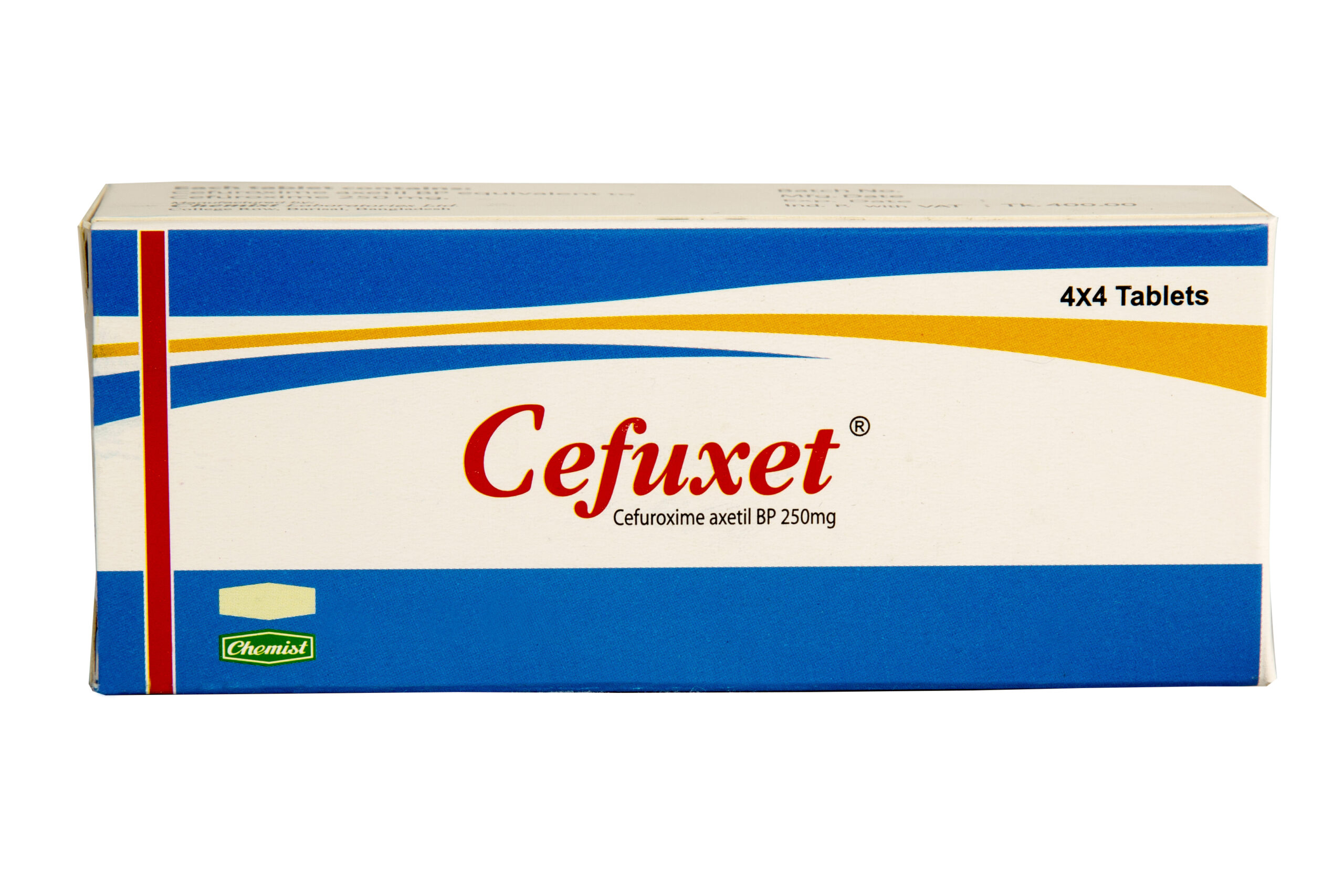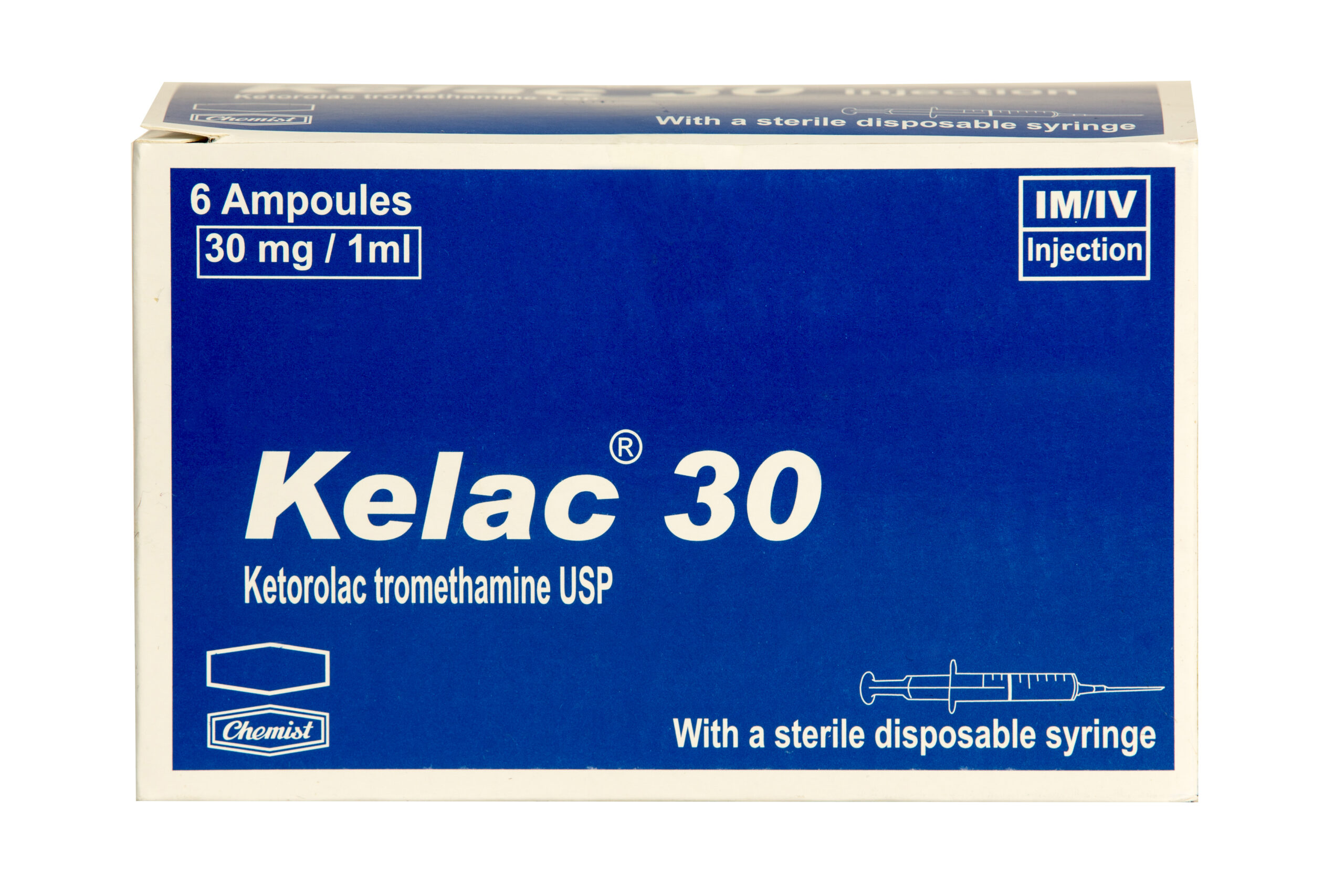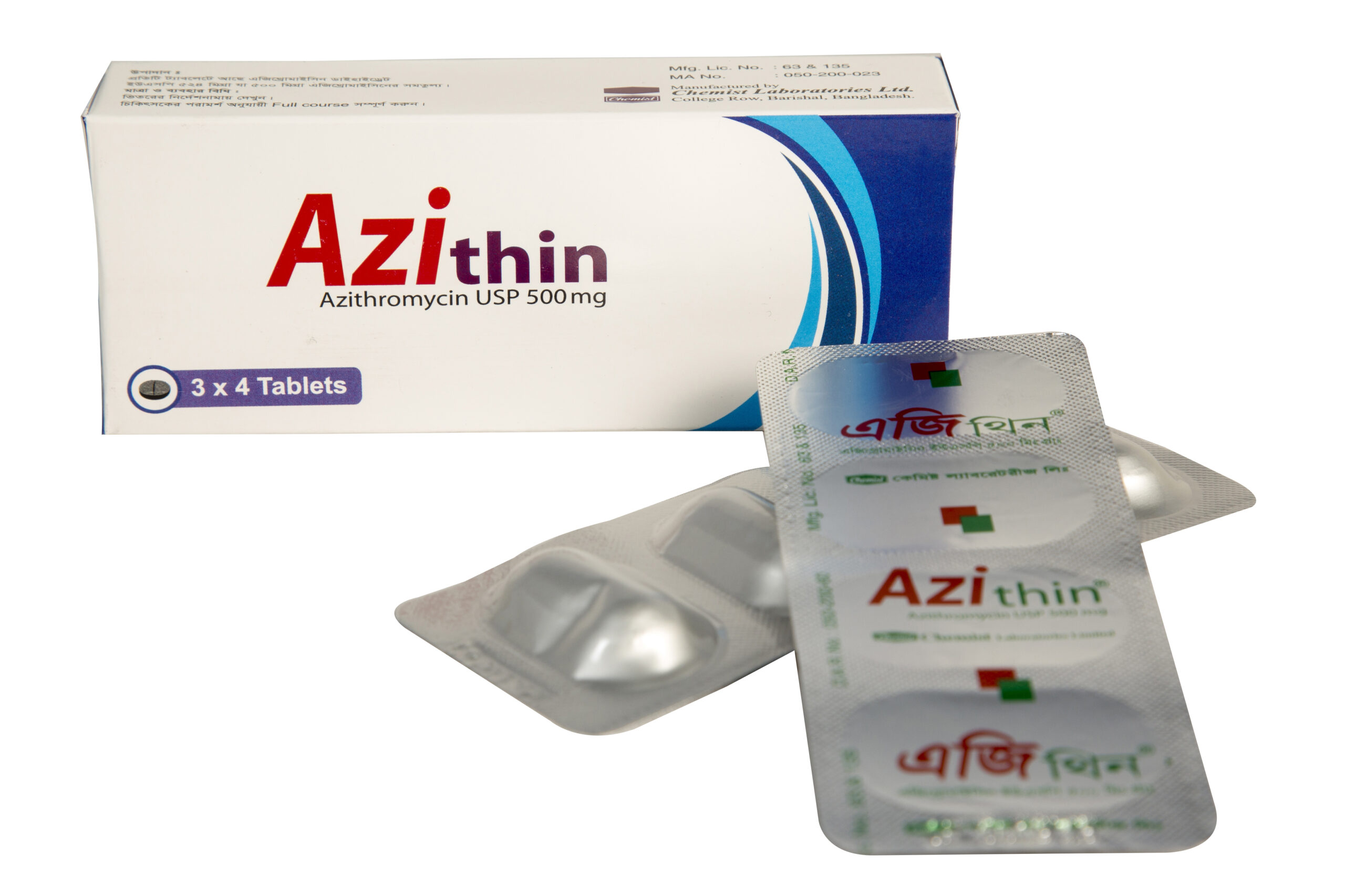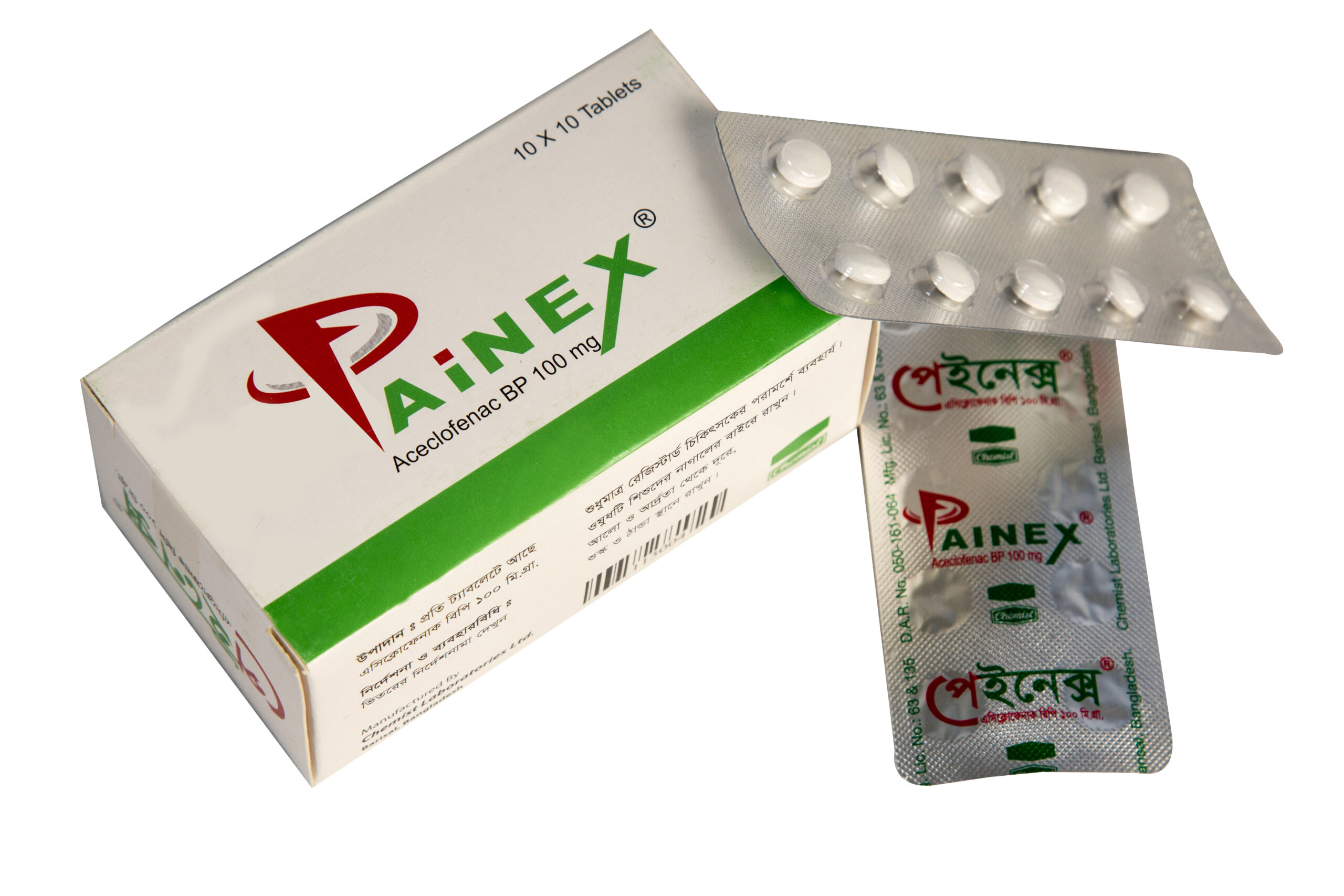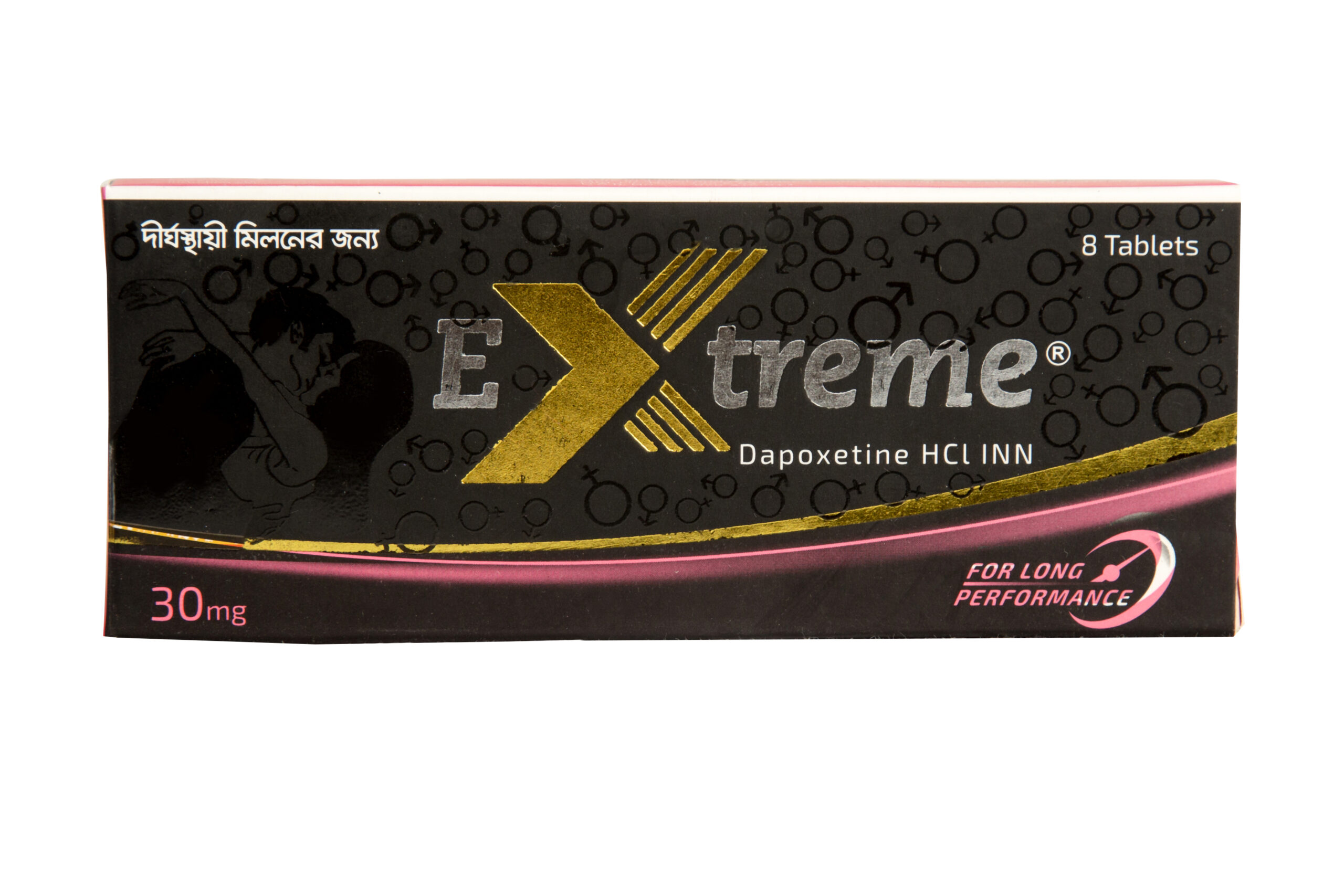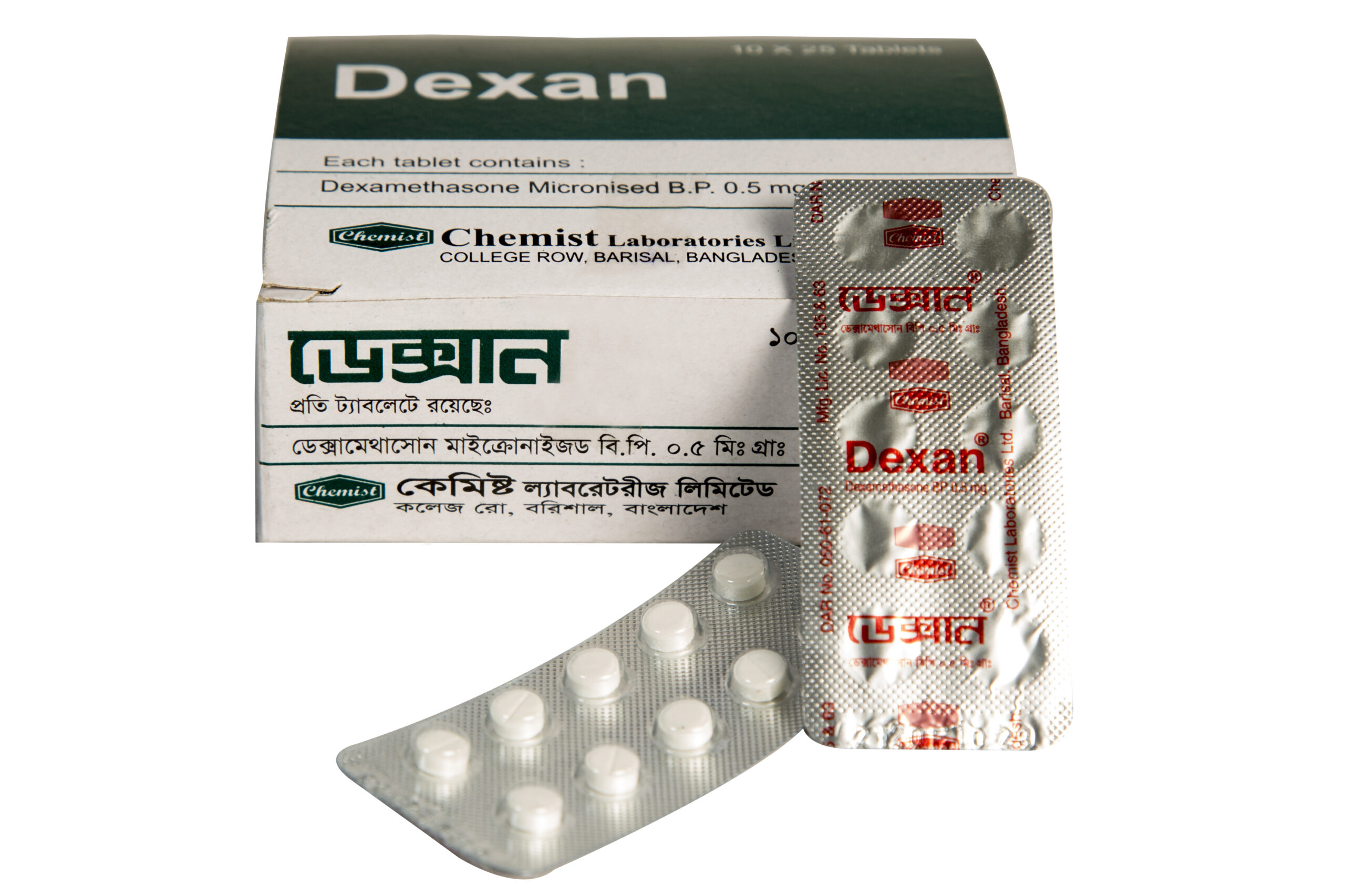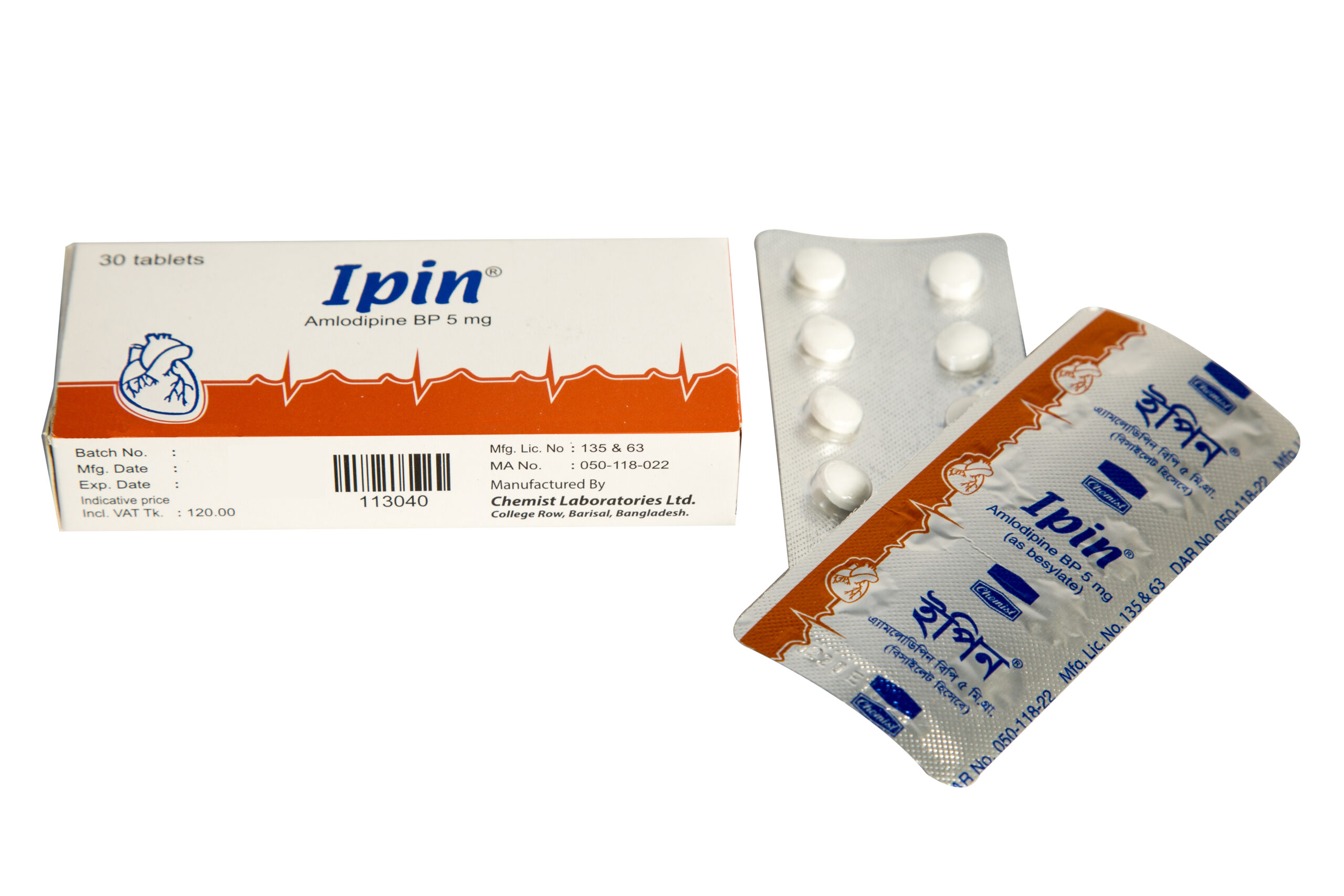Human Tablet
Fluconazole 50 mg
Business Unit: Human
Medicine Type: Tablet
Generic Name: Fluconazole 50 mg
Therapeutic Class: Drugs for subcutaneous and mycoses
Indication: Fluconazole is indicated for the treatment of vaginal candidiasis, oropharyngeal & esophageal candidiasis and cryptococcal meningitis. It is also effective for the treatment of urinary tract infection caused by candida, peritonitis and systemic candida infections (including candidemia, disseminated candidiasis and pneumonia).
Dosage & Administration: Adult (oral)- Vaginal candidiasis: 150 mg as a single dose. Oropharyngeal candidiasis: 200 mg on the first day, followed by 100 mg once daily. Clinical evidence of this infection generally resolves within several days, but treatment should be continued for at least 2 weeks to decrease the likelihood of relapse. Esophageal candidiasis: 200 mg on the first day, followed by 100 mg once daily. Doses up to 400 mg/day may be used. Patients should be treated for a minimum of three weeks and for at least two weeks following resolution of symptoms. Systemic candida infections: Optimal therapeutic dosage and duration of therapy have not been established. Sometimes, doses of up to 400 mg daily have been used. Urinary tract infections caused by candida and peritonitis: 50-200 mg daily have been used. Cryptococcal meningitis: 400 mg on the first day, followed by 200 mg once daily. Prophylaxis in patients undergoing bone marrow transplantation: 400 mg once daily. Child (oral): Doses of 3-6 mg/kg daily have been used. Doses up to 12 mg/kg is recommended. Intravenous- Adult: Invasive candidal infections including candidaemia and disseminated candidiasis and cryptococcal infections including meningitis, by IV, 400 mg initially then 200 mg daily, increased if necessary to 400 mg daily, treatment continued according to response (at least 6-8 weeks for cryptococcal meningitis) Child: 6-12 mg/kg daily (every 72 hours in neonate up to 2 weeks old, every 48 hours in neonate 2-4 weeks old); maximum 400 mg daily. Prevention of relapse of cryptococcal meningitis, by IV, 100-200 mg daily.
Preparation: 2x10 Tablets
Flupentixol 0.5 mg + Melitracen 10 mg
Business Unit: Human
Medicine Type: Tablet
Generic Name: Flupentixol 0.5 mg + Melitracen 10 mg
Therapeutic Class: Combined anxiolytics & anti-depressant drugs
Indication: Dinxi is a teblet preparation of flupentixol dihydrochloride & melitracen hydrochloride. Flupentixol and Melitracen tablet is indicated in- 1. Anxiety 2. Depression 3. Apathy 4. Psychogenic depression. 5. Depressive neurosis. 6. Masked depression. 7. Psychosomatic affections accompanied by anxiety and apathy. 8. Menopausal depressions. 9. Dysphoria and depression in alcoholics and drug addicts.
Dosage & Administration: By mouth : Adults: Usually 2 tablets daily; morning and noon . In severe cases the morning dose may be increased to 2 tablets. Elderly patients: 1 tablet in the morning. Maintenance dose: Usually 1 tablet in the morning. In cases of insomnia or severe restlessness additional treatment with a sedative is recommended.
Preparation: 10 x 5 Tablet
Cefuroxime axetil
Business Unit: Human
Medicine Type: Tablet
Generic Name: Cefuroxime axetil
Therapeutic Class: Second generation Cephalosporins
Indication: Cefuxet is a preparation of Cefuroxime. Cefuroxime is one of the bactericidal second generation cephalosporin antibiotic which is active against a wide range of Gram-positive and Gram-negative susceptible organisms including many beta-lactamase producing strains. It is indicated for the treatment of infections caused by sensitive bacteria like, Acute otitis media, acute maxillary sinusitis, RTI, UTI etc.
Dosage & Administration: Tablet or Suspension- Adolescents and adults (13 years and older)- Pharyngitis/tonsillitis: 250 mg b.i.d. for 5-10 days Acute bacterial maxillary sinusitis: 250 mg b.i.d. for 10 days Acute bacterial exacerbation of chronic bronchitis: 250-500 mg b.i.d. for 10 days Secondary bacterial infections of acute bronchitis: 250-500 mg b.i.d. for 5-10 days Uncomplicated skin and skin structure infections: 250-500 mg b.i.d. for 10 days Uncomplicated urinary tract infections: 250 mg b.i.d. for 7-10 days Uncomplicated Gonorrhoea: 1000 mg Single dose Community acquired pneumonia: 250-500 mg b.i.d. for 5-10 days MDR Typhoid Fever: 500 mg b.i.d. for 10-14 days Early Lyme disease: 500 mg b.i.d. for 20 days Paediatric Patients (3 months to 12 years)- Pharyngitis/Tonsillitis: 20 mg/kg/day b.i.d for 5-10 days Acute otitis media: 30 mg/kg/day b.i.d for 10 days Acute bacterial maxillary sinusitis: 30 mg/kg/day b.i.d for 10 days Impetigo: 30 mg/kg/day b.i.d for 10 days Parenteral- Adult: 750 mg three times daily by IM or IV injection. In severe infections, dose can be increased upto 1.5 gm three times daily by IV injection. The frequency may be increased to four times daily, if necessary, giving total daily doses of 3 to 6 gm. Children (above 3 months of age): 30 - 100 mg/kg/day given in 3 or 4 equally divided doses. A dose of 60 mg/kg/day is appropriate for most infections. Neonate: 30 - 100 mg/kg/day given in 2 or 3 equally divided doses. Surgical prophylaxis: 1.5 gm by IV injection at induction of anaesthesia; up to 3 further doses of 750 mg may be given by IV/IM injection every 8 hours for high risk procedures. Pneumonia: 1.5 gm IV injection twice daily for 2-3 days, followed by 500 mg twice daily (oral) for 7-10 days. Acute exacerbations of chronic bronchitis: 750 mg twice daily (IM or IV injection) for 2-3 days, followed by 500 mg twice daily (oral) for 5-10 days. (Duration of both parenteral and oral therapy is determined by the severity of the infection and the clinical status of the patient.) In Gonorrhoea: Adult: 1.5 gm as a single dose (as 2 x 750mg injections intramuscularly with different sites, e.g. each buttock). In Meningitis: Adult: 3 gm IV injection three times daily. Children (above 3 months of age): 200-240 mg/kg/day by IV injection in 3 or 4 divided doses reduced to 100 mg/kg/day after 3 days or on clinical improvement. Neonate: 100 mg/kg/day by IV injection at initial dose, reduced to 50 mg/kg/day, When clinically indicated. In bone and joint infections: Adult: 1.5 gm IV injection four times daily. Children (above 3 months of age): 150 mg/kg/day (not to exceed the maximum adult dose) in equally divided doses every 8 hours.
Preparation: 4 x 4 Tablet
Ketorolac Tromethamine
Business Unit: Human
Medicine Type: Tablet
Generic Name: Ketorolac Tromethamine
Therapeutic Class: Non-Opioid Analgesics
Indication: Kelac is a preparation of Ketorolac Tromethamine. Ketorolac Tromethamine is a Nonsteroidal Anti-Inflammatory Drug (NSAID) that inhibits synthesis of prostaglandins and may be considered as a peripherally acting analgesic. Kelac is indicated for the short-term (<5 days) management of moderately severe acute pain i,e; postoperative pain, severe back pain, dental pain etc.
Dosage & Administration: By mouth The recommended oral dose of Kelac -10 is 10 mg (One tablet) every 4 to 6 hours for pain as required. Doses exceeding 40 mg per day are not recommended . Kelac 10 tablets are recommended for short term us only (Up to 7 days) . Dosage should be adjusted according to the severity of the pain and the patient response.
Preparation: 10x2 Tablet
Allylestrenol 5mg
Business Unit: Human
Medicine Type: Tablet
Generic Name: Allylestrenol 5mg
Therapeutic Class: Female Sex hormones
Indication: Nidagest is a tablet preparation of Allylestrenol which is a synthetic progestogen (Female Sex hormone). Nidagest is used for Management of Threatened abortion, Habitual abortion, Threatened premature labour, Intra Uetrine Growth Retardation (IUGR).
Dosage & Administration: By Mouth Threatened Abortion : 5 mg (one tablet) 3 times daily for 5-7 days. If necessary, the treatment period may be extended. After disappearance of the symptoms the dosage should be gradually reduced unless symptoms return. Intra Uterine Growth Retardation (IUGR): 5 mg ( 1 tablet) 3 times daily at least 2 months. Dose may reduce if symptoms improve. Habitual Abortion : 5-10 mg ( 1-2 tablets ) daily with the confirmation of pregnancy. Administration should be continued until at least 1 month after critical period. Threatened Premature Labour : 40mg ( 8 tablets) daily until symptoms improve. Failure of Nidation: 10-20 mg ( 2-4 tablets) daily from 16th to 26th day of the cycle until conception is achieved.
Preparation: 3x10 Tablet
Azithromycin USP 500mg
Business Unit: Human
Medicine Type: Tablet
Generic Name: Azithromycin USP 500mg
Therapeutic Class: Macrolide Antibiotic
Indication: Azithromycin is an azalide antibiotic, subclass of the macrolide class of antibiotics. Azithromycin acts by binding to the 50s ribosomal subunit of susceptible organisms and thus interferes with microbial protein synthesis. Azithin is indicated for infections (caused by susceptible organisms) in lower respiratory tract infections including bronchitis and pneumonia, in upper respiratory tract infections including sinusitis and pharyngitis/tonsillitis, in otitis media, and in skin and soft tissue infections. In sexually transmitted diseases in men and women, Azithin is also indicated in the treatment of non-gonococcal urethritis and cervicitis due to Chlamydia trachomatis.
Dosage & Administration: Adult: 500 mg Once daily orally for 7 days or more depending on the indication. For STDs: 1 gm orally as a single dose. Children's (Over 6 months): 10 mg/kg orally once daily for 5 to 7 days.
Preparation: 3x4 Tablet
Tiemonium Methylsulphate 50mg
Business Unit: Human
Medicine Type: Tablet
Generic Name: Tiemonium Methylsulphate 50mg
Therapeutic Class: Anticholinergics - antispasmodic
Indication: Tienum is a preparation of Tiemonium Methylsulphate. Tiemonium Methylsulphate is an antispasmodic drug that reduces muscles spasm of the intestine, biliary system, bladder and uterus. Tienum is used in the symptomatic treatment of pain related to functional disorders of the digestive tract and biliary system. It is also indicated for the treatment of spasm and pain in urological and gynecological diseases.
Dosage & Administration: The usual dosages of Tienum are 2 to 6 tablets (100 - 300 mg) daily in divided doses as required.
Preparation: Each box contains 5 X10 Tablets.
Cefuroxime axetil 500 mg
Business Unit: Human
Medicine Type: Tablet
Generic Name: Cefuroxime axetil 500 mg
Therapeutic Class: Second generation Cephalosporins
Indication: Cefuxet (Cefuroxime axetil) is a second generation semi-synthetic, broad-spectrum oral cephalosporin antibiotic for oral & parenteral administration. It is indicated for Lower RTI, Upper RTI,SSTI,Urinary Tract Infection, Lyme Disease etc.
Dosage & Administration: Adolescents and adults (13 years and older)- • Pharyngitis/tonsillitis: 250 mg b.i.d. for 5-10 days • Acute bacterial maxillary sinusitis: 250 mg b.i.d. for 10 days • Acute bacterial exacerbation of chronic bronchitis: 250-500 mg b.i.d. for 10 days • Secondary bacterial infections of acute bronchitis: 250-500 mg b.i.d. for 5-10 days • Uncomplicated skin and skin structure infections: 250-500 mg b.i.d. for 10 days • Uncomplicated urinary tract infections: 250 mg b.i.d. for 7-10 days • Uncomplicated Gonorrhoea: 1000 mg Single dose • Community acquired pneumonia: 250-500 mg b.i.d. for 5-10 days • MDR Typhoid Fever: 500 mg b.i.d. for 10-14 days • Early Lyme disease: 500 mg b.i.d. for 20 days
Preparation: 3x4 Tablet
Naproxen 500 mg & Esomeprazole 20 mg
Business Unit: Human
Medicine Type: Tablet
Generic Name: Naproxen 500 mg & Esomeprazole 20 mg
Therapeutic Class: Non-steroidal Anti-inflammatory Drugs (NSAIDs)
Indication: Twist is a Tablet preparation of Naproxen & Esomeprazole. Naproxen is an NSAID that inhibits COX in the prostaglandin synthesis pathway, ultimately lead to relief of pain. Naproxen is the best choice of drug for chronic pain management i,e; Osteoarthritis, Rheumatoid arthritis & Ankylosing Spondylitis. However, the most common side effect of Naproxen is gastric ulcer, that's why an anti-ulcer drug Esomeprazole is combined with Naproxen as a single dosage form.
Dosage & Administration: One tablet orally twice daily at least 30 minutes before meal. The tablet should be swallowed whole with liquid and should not be split, chewed, crushed or dissolved.
Preparation: Each box contains 6 X10 Tablets.
Aceclofenac 100 mg
Business Unit: Human
Medicine Type: Tablet
Generic Name: Aceclofenac 100 mg
Therapeutic Class: Non-steroidal Anti-inflammatory Drugs (NSAIDs)
Indication: Aceclofenac is a non-steroidal anti-inflammatory drug with analgesic properties. It is a potent inhibitor of the enzyme cyclooxygenase, which is involved in the production of prostaglandin. Painex is indicated for the relief of pain and inflammation in osteoarthritis, rheumatoid arthritis, ankylosing spondylitis, toothache, trauma and lumbago.
Dosage & Administration: Adults: The maximum recommended dose is 200 mg daily, taken as two separate 100 mg doses, one tablet in the morning and one in the evening. Children: There is no clinical data on the use of aceclofenac in children. Elderly: The pharmacokinetics of aceclofenac are not altered in elderly patients, therefore it is not considered necessary to modify the dose and dose frequency.Renal insufficiency: There is no evidence that the dosage of aceclofenac needs to be modified in patients with mild renal impairment.Hepatic insufficiency: The dose of aceclofenac should be reduced in patients with hepatic impairment. An initial daily dose of 100 mg should be administered.
Preparation: 10x15 Tablets
Vitamin B1 + Vitamin B6+ Vitamin B12
Business Unit: Human
Medicine Type: Tablet
Generic Name: Vitamin B1 + Vitamin B6+ Vitamin B12
Therapeutic Class: Specific combined vitamin preparations
Indication: Nurobix Plus is a special preparation of vitamin B1, B6 and B12. The vitamins B1, B6 and B12 are indispensable for a normal course of the nervous metabolism. Nurobix Plus is indicated for the treatment of B1, B6 and B12 deficiency syndrome. It is indicated in the treatment of: Diabetic neuropathy, Sciatica, Peripheral neuralgia , Facial neuralgia, Lumbago, Intercostal neuralgia, Myalgia, Spinal pain etc.
Dosage & Administration: Tablet: 1-3 Tablets per day or as advised by the physician. Injection: In severe (acute) cases: 1 injection daily until the acute symptoms subside or taken as advised by the physician. In mild cases: 1 injection 2-3 times per week. Ampoules are preferably injected intramuscularly. Use in children: There is no information on the use of this drug in children.
Preparation: 1x30 Tablets
Montelukast 5 mg
Business Unit: Human
Medicine Type: Tablet
Generic Name: Montelukast 5 mg
Therapeutic Class: Leukotriene receptor antagonists
Indication: Monofast is a preparation of Montelukast. Montelukast is a selective and orally active leukotriene receptor antagonist that inhibits the cysteinyl leukotriene CysLT1 receptor. Cysteinyl leukotrienes and leukotriene receptor occupation have been correlated with the pathophysiology of asthma. Montelukast is indicated for the prophylaxis and chronic treatment of asthma in adults and pediatric patients from 6 months of age and older.
Dosage & Administration: Adults & adolescents (15 years & older)- Asthma & Allergic Rhinitis: 10 mg/day Exercise-Induced Bronchoconstriction: 10 mg/day Pediatric patients (6 to 14 years)- Asthma & Allergic Rhinitis: 5 mg/day Exercise-Induced Bronchoconstriction: 5 mg/day Pediatric patients (6 months to 5 years)- Asthma & Allergic Rhinitis: 4 mg/day Exercise-Induced Bronchoconstriction: Not recommended Patients with both asthma and allergic rhinitis should take only one dose daily in the evening. For prevention of Acute prevention of Exercise-Induced Bronchoconstriction, a single dose should be taken at least 2 hours before exercise. Route of administration: Oral. Montelukast may be taken with or without food or as directed by the physician.
Preparation: 10x3 Tablets
Cefuroxime Axetil 500 mg & Clavulanic Acid 125 mg
Business Unit: Human
Medicine Type: Tablet
Generic Name: Cefuroxime Axetil 500 mg & Clavulanic Acid 125 mg
Therapeutic Class: Second generation Cephalosporins
Indication: Cefuxet plus is a tablet which is combination of cefuroxim axetil and clavulanic acid. Cefuroxime is one of the bactericidal second generation cephalosporin antibiotics. The presence of clavulanic acid in Cefuxet plus protects Cefuroxime from degradation by beta-lactamase enzymes and effectively extends the antibacterial spectrum of Cefuroxime. It is frequently used in post surgical infection. Other uses of cefuxet plus is Acute otitis media, Tonsilitis, SSTI, Early lyme disease. Maxillary sinusitis etc.
Dosage & Administration: By Mouth The usual course of therapy is seven days (Range 5 – 10 days). Cefuroxime axetil should be taken after food for optimum absorption
Preparation: 2x4 Tablet
Calcium Orotate 400 mg
Business Unit: Human
Medicine Type: Tablet
Generic Name: Calcium Orotate 400 mg
Therapeutic Class: Minerals in bone formation, Specific mineral preparations
Indication: Easycal contains Calcium Orotate which is a calcium supplement. with a functional amino acid chelating ligand - orotic acid. Orotic acid facilitates the intracellular uptake of calcium, particularly in bone. Calcium Orotate also helps in the maintenance of healthy cartilage. Furthermore, Orotate is involved in the synthesis of DNA (deoxyribonucleic acid) and RNA (ribonucleic acid). Calcium Orotate has the ability to penetrate complex cell membranes and it can be metabolized in cartilage. This medication is used to prevent or treat low blood calcium levels in people who do not get enough calcium from their diets. To fulfill the calcium deficiency or meet extra need of calcium, it may be used in conditions like osteoporosis osteomalacia, rickets, latent tetany, postmenopausal osteoporosis, senile osteoporosis, juvenile osteoporosis, drug (phenytoin, phenobarbital, or prednisone) induced osteoporosis, pregnancy and lactation, premenstrual syndrome (PMS), hypoparathyroidism and hip joint plastic surgery. Calcium Orotate acts against a number of inflammatory diseases like arthritis, psoriasis, lupus, spondylitis, various cardiovascular ailments, encephalitis, retinitis, phlebitis, colitis, and multiple sclerosis. Calcium Orotate helps in controlling weight by suppressing the habit of frequent appetite of chronic overeaters. It is also beneficial in reducing the effects of mood swings and is proved to be quite effective in cognitive enhancement. Calcium Orotate protects the heart by enhancing the efficiency of cardiac muscles. Recent studies on calcium orotate indicate its potential to minimize the risk of colon cancer.
Dosage & Administration: As an addition to the daily diet, 2-3 tablets are usually recommended with meal or as directed by health care professional.
Preparation: 3 x 10 Tablet
Dapoxetine HCL INN 30 mg
Business Unit: Human
Medicine Type: Tablet
Generic Name: Dapoxetine HCL INN 30 mg
Therapeutic Class: Drugs for Erectile Dysfunction
Indication: Extreme is a tablet preparation of Dapoxetine which is a short-acting selective serotonin-reuptake inhibitor (SSRI). Indicated for the treatment of premature ejaculation (PE) in men 18 to 64 years of age, who have all of the following: 1. Persistent or recurrent ejaculation with minimal sexual stimulation before, on or shortly after penetration and before the patient wishes. 2. Marked personal distress or interpersonal difficulty as a consequence of PE and poor control over ejaculation.
Dosage & Administration: By Mouth It should only be prescribed to patients who meet all the following criteria: • An intravaginal ejaculatory latency time (IELT) of less than two minutes; and • Persistent or recurrent ejaculation with minimal sexual stimulation before, on, or shortly after penetration and before the patient wishes; and • Marked personal distress or interpersonal difficulty as a consequence of PE; and • Poor control over ejaculation; and • A history of premature ejaculation in the majority of intercourse attempts over the prior 6 months. Dapoxetin should be administered only as on-demand treatment before anticipated sexual activity. It should not be prescribed to delay ejaculation in men who have not been diagnosed with PE. Adult (18 to 64 years of age): The recommended starting dose for all patients is 30 mg, taken as needed approximately 1 to 3 hours prior to sexual activity. If the effect of 30 mg is insufficient and the side effects are acceptable, the dose may be increased to the maximum recommended dose of 60 mg. The maximum recommended dosing frequency is one dose every 24 hours.
Preparation: 1 x 8 Tablet
Montelukast 10 mg
Business Unit: Human
Medicine Type: Tablet
Generic Name: Montelukast 10 mg
Therapeutic Class: Leukotriene receptor antagonists
Indication: Monofast is a preparation of Montelukast. Montelukast is a selective and orally active leukotriene receptor antagonist that inhibits the cysteinyl leukotriene CysLT1 receptor. Cysteinyl leukotrienes and leukotriene receptor occupation have been correlated with the pathophysiology of asthma. Montelukast is indicated for the prophylaxis and chronic treatment of asthma in adults and pediatric patients from 6 months of age and older.
Dosage & Administration: Adults & adolescents (15 years & older)- Asthma & Allergic Rhinitis: 10 mg/day Exercise-Induced Bronchoconstriction: 10 mg/day Pediatric patients (6 to 14 years)- Asthma & Allergic Rhinitis: 5 mg/day Exercise-Induced Bronchoconstriction: 5 mg/day Pediatric patients (6 months to 5 years)- Asthma & Allergic Rhinitis: 4 mg/day Exercise-Induced Bronchoconstriction: Not recommended Patients with both asthma and allergic rhinitis should take only one dose daily in the evening. For prevention of Acute prevention of Exercise-Induced Bronchoconstriction, a single dose should be taken at least 2 hours before exercise. Route of administration: Oral. Montelukast may be taken with or without food or as directed by the physician.
Preparation: 10x3 Tablets
Cefixime Trihydrate USP 200 mg & 400mg
Business Unit: Human
Medicine Type: Capsule
Generic Name: Cefixime Trihydrate USP 200 mg & 400mg
Therapeutic Class: 3rd generation cephalosporin antibiotic
Indication: Excef is a formulation of Cefixime trihydrate USP for oral administration which is a broad spectrum third generation bactericidal cephalosporin antibiotic. Cefixime is indicated in the treatment of the following infections when caused by the susceptible strains of the designated microorganisms: 1. Uncomplicated urinary tract infections caused by Escherichia coli and Proteus mirabilis. 2. Otitis Media caused by Haemophilus influenzae, Moraxella catarrhalis and Streptococcus pyogenes. 3. Pharyngitis and tonsillitis caused by Streptococcus pyogenes. 4. Acute bronchitis and acute exacerbations of chronic bronchitis caused by Streptococcus pneumoniae and Haemophilus influenzae. 5. Uncomplicated gonorrhoea (cervical/urethral) caused by Neisseria gonorrhoeae.
Dosage & Administration: By mouth : Adult and Children over 12 years: The recommended adult dose is 200-400 mg daily given either as a single dose or in two divided dose for 7-14 days depending on the severity or the infection. For the treatment of uncomplicated cervical urethral gonococcal infection a single oral dose of Cefixime 400 mg is recommended singly 800 mg may be given if needed. Children up to 12 years: Usually 8mg / kg / day given as a single dose or in two divided doses . Above 12 years: Adult dose should be given. The safely and efficacy of cefixime has not been established in children aged less than 6 months.
Preparation: Excef 200mg: 2 x 6 Capsules Excef 400mg: 2 x 4 Capsules
Ranitidine HCI 150mg tablet & 50mg/2ml injection
Business Unit: Human
Medicine Type: Injectable Tablet
Generic Name: Ranitidine HCI 150mg tablet & 50mg/2ml injection
Therapeutic Class: Histamine receptor blocker
Indication: Ranix is formulation of Ranitidine which is known as H2 receptor antagonist. Ranix is indicated for Peptic Ulcer Disease (PUD), Gastroesophageal Reflux Disease (GERD), Zollinger-Ellison syndrome, Upper gastrointestinal bleeding and Stress ulcers.
Dosage & Administration: Oral: 150 mg 2 times a day, or 300 mg once a day after the evening meal . or at bed time. Parenteral: 50 mg, IV or IM, every 6 to 8 hours for up to 8 weeks
Preparation: 2ml x 10 Injection
Levofloxacin 500 mg
Business Unit: Human
Medicine Type: Tablet
Generic Name: Levofloxacin 500 mg
Therapeutic Class: Antibiotic (third-generation fluoroquinolone derivative)
Indication: Letab (Levofloxacin 500 mg) is a third generation fluorinated quinolones, broad spectrum, bactericidal antibiotic. It is indicated for RTIs, Pneumonia, Acute Sinusitis, Chronic Bronchitis, SSTI,UTI,MDR(Multi Drug Resistance) Enteric Fever
Dosage & Administration: By mouth Acute sinusitis: 500 mg once daily for 10-14 days. Exacerbation of chronic bronchities: 250 –500 mg daily for 7 days Community acquired pneumonia: 500 mg once or twice daily for 7-10 days. Complicated urinary- tract infection and acute pyelonephritis: 250 mg daily for 7-10 days Uncomplicated skin and soft tissue infections: 500 mg once daily for 7-10 days Complicated skin and soft tissue infections: 750 mg once daily for 7-14 days Enteric fever: 500 mg once daily for 7 – 14 days.
Preparation: 10x5 Tablets
Calcium Carbonate
Business Unit: Human
Medicine Type: Tablet
Generic Name: Calcium Carbonate
Therapeutic Class: Specific mineral preparations
Indication: Calcium carbonate is a salt, which after taking provides calcium in the body. This is used for the treatment or prevention of calcium depletion in patients in whom dietary measures are inadequate.
Dosage & Administration: Calciton 500 mg tablet: Calcium Carbonate is always used orally and when used as an antacid the recommended doses for adults are equivalent to 540-2000 mg Calcium Carbonate per day, doses for children being half of those for adults.
Preparation: 3x10 Tablet
Domperidone BP 10mg
Business Unit: Human
Medicine Type: Tablet
Generic Name: Domperidone BP 10mg
Therapeutic Class: Motility stimulants/Dopamine antagonist
Indication: Avomit is a preparation of Domperidone. Domperidone is a dopamine receptor antagonist. Avomit prevents nausea and vomiting and reduces feelings of sickness, bloating and fullness etc.
Dosage & Administration: Adults: 10-20 mg every 4-8 hours daily. Children: 0.2-0.4 mg/kg every 4-8 hours daily. For acute nausea and vomiting, maximum period of treatment is 12 weeks. It should be taken 15-30 minutes before a meal.
Preparation: 15x10 Tablet
Vitamin-C + Vitamin-E
Business Unit: Human
Medicine Type: Tablet
Generic Name: Vitamin-C + Vitamin-E
Therapeutic Class: Anti-oxidant Multivitamin preparations, Specific combined vitamin preparations
Indication: Cetox Plus is a combination of Vitamin C & Vitamin E. Vitamins C and E are antioxidants. They boost the immune system so it can fight off bacteria and viruses. Vitamin C is essential for prevention and treatment of scurvy. Vitamin E is used in hemolytic anemia due to Vitamin E deficiency.
Dosage & Administration: Adult: 1 tablet daily or as advised by the physician.
Preparation: 4 x 5 Tablet
Dexamethasone Sodium Phosphate
Business Unit: Human
Medicine Type: Tablet
Generic Name: Dexamethasone Sodium Phosphate
Therapeutic Class: Glucocorticoids, Corticosteroid
Indication: 1. Allergic states: Control of severe or incapacitating allergic conditions intractable to adequate trials of conventional treatment in asthma, atopic dermatitis, contact dermatitis, drug hypersensitivity reactions, perennial or seasonal allergic rhinitis and serum sickness. 2. Collagen disease: Like lupus erythematosus, rheumatoid arthritis etc. 3. Dermatologic diseases: Bullous dermatitis herpetiformis, exfoliative erythroderma, mycosis fungoides, pemphigus and severe erythema multiforme (Stevens-Johnson syndrome). Endocrine disorders: Primary or secondary adrenocortical insufficiency, congenital adrenal hyperplasia, hypercalcemia associated with cancer and nonsuppurative thyroiditis. 4. Gastrointestinal diseases: Regional enteritis and ulcerative colitis. 5. Hematologic disorders: Acquired (autoimmune) hemolytic anemia, congenital (erythroid) hypoplastic anemia (Diamond-Blackfan anemia), idiopathic thrombocytopenic purpura in adults and selected cases of secondary thrombocytopenia. 6. Neoplastic diseases: Leukemias and lymphomas. 7. Nervous system: Acute exacerbations of multiple sclerosis, cerebral edema associated with primary or metastatic brain tumor, craniotomy or head injury. 8. Ophthalmic diseases: Temporal arteritis, uveitis, and ocular inflammatory conditions unresponsive to topical corticosteroids. 9. Renal diseases: To induce a diuresis or remission of proteinuria in idiopathic nephrotic syndrome or that due to lupus erythematosus. 10. Respiratory diseases: Berylliosis, fulminating or disseminated pulmonary tuberculosis when used concurrently with appropriate antituberculous chemotherapy, idiopathic eosinophilic pneumonias, symptomatic sarcoidosis. 11. Rheumatic disorders: As adjunctive therapy for short-term administration (to tide the patient over an acute episode or exacerbation) in acute gouty arthritis, acute rheumatic carditis, ankylosing spondylitis, psoriatic arthritis, rheumatoid arthritis, including juvenile rheumatoid arthritis (selected cases may require low-dose maintenance therapy). For the treatment of dermatomyositis, polymyositis, and systemic lupus erythematosus. 12. Miscellaneous: Diagnostic testing of adrenocortical hyperfunction, trichinosis with neurologic or myocardial involvement, tuberculous meningitis with subarachnoid block or impending block when used with appropriate antituberculous chemotherapy.
Dosage & Administration: In adult patients, daily oral dosages vary from 1 mg to 10 mg and in children from 0.03-0.20 mg/kg body weight,according to the individual response. 1. In some patients higher dosages may be temporarily required,to control the disease. As soon as circumstances permit,dosage should be decreased. 2. For a short dexamethasone suppression test 1 mg dexamethasone is given at 11 p.m. and plasmacortisol measured the next morning. 3. Patients who do not show a decrease in cortisol can be exposed to a longer test: 0.5 mg dexamethasone is given at 6-hour intervals. 4. For 48 hours followed by 2 mg every 6 hours for a further 48 hours. 24-hour urine collections are made before, during and at the end of the test for the determination of 17 alpha-hydroxycorticoids. For injection: Dexamethasone can be given by intravenous (IV), intramuscular (IM) or local injection. Dexamethasone injections can also be diluted with an infusion fluid or be injected directly into the infusion line. Intravenous injections of massive doses should be given slowly, over a period of several minutes. Intramuscular administration should be given by deep intramuscular injection,to prevent atrophy of the subcutaneous adipose tissues. Intra-articular injections should be given under strictly aseptic conditions as glucocorticoids decrease the resistance to infection. When diluted with these infusion fluids, Dexamethasone will keep its potency for at least 24 hours (at room temperature and in daylight conditions). As infusion fluids, Sodium chloride 0.9%, Anhydrous glucose 5%, Invert sugar 10%, Sorbitol 5%, Ringer's solution, Hartman's solution (Ringer-lactate) etc.can be used. The dosage of Dexamethasone depends on the severity of the condition and the response of the patient. For systemic therapy in adults, daily doses of 0.05-0.20 mg/kg body weight are usually sufficient. For emergencies (e.g. anaphylaxis, acute severe asthma, cerebral edema) substantially higher doses are required. An initial dose of 10-20 mg IV is followed by 6 mg IV or IM every 6 hours,until a satisfactory result has been obtained. Thereafter the dosage has to be tapered off gradually. For local therapy, the following doses are recommended: Intra-articularly: 2-4 mg in large and 0.8-1 mg in small joints Intrabursally: 2-4 mg;in tendon sheaths:0.4-1 mg The frequency of these injections may vary from every 3-5 days to every 2-3 weeks
Preparation: 10 x 25 Tablet
Albendazole 400 mg
Business Unit: Human
Medicine Type: Tablet
Generic Name: Albendazole 400 mg
Therapeutic Class: Anthelmintic
Indication: Nematox-DS Albendazole is a benzimidazole anthelmintic, active against most nematodes and some cestodes. It is used in the treatment of intestinal nematode infections and in higher doses in the treatment of hydatid disease. ( Albendazole) is indicated in single and mixed infestations of- Enterobius vermicularis Trichuris trichuria Ascaris lumbricoides Ancylostoma duodenale Necator americanus Taenia spp. Strongyloides stercoralis.
Dosage & Administration: Adults & children over 2 years: 400 mg (1 tablet or 10 ml suspension) as a single dose in cases of Enterobius vermicularis, Trichuris trichiura, Ascaris lumbricoides, Ancylostoma duodenale and Necator americanus. In cases of strongyloidiasis or taeniasis, 400 mg (1 tablet or 10 ml suspension) daily should be given for 3 consecutive days. If the patient is not cured on follow-up after three weeks, a second course of treatment is indicated. Children of 1-2 years: Recommended dose is a single dose of 200 mg (5 ml suspension). Children under 1 year: Not recommended. In Hydatid disease (Echinococcosis): Albendazole is given by mouth with meals in a dose of 400 mg twice daily for 28 days for patients weighing over 60 kg. A dose of 15 mg/kg body weight daily in two divided doses (to a maximum total daily dose of 800 mg) is used for patients weighing less than 60 kg. For cystic echinococcosis, the 28 days course may be repeated after 14 days without treatment, to a total of 3 treatment cycles. For alveolar echinococcosis, cycles of 28 days of treatment followed by 14 days without treatment, may need to continue for months or years. In giardiasis, 400 mg (1 tablet or 10 ml suspension) once daily for five days is used.
Preparation: 2 x25 Tablets
Amlodipine 5mg + Atenolol 50mg
Business Unit: Human
Medicine Type: Tablet
Generic Name: Amlodipine 5mg + Atenolol 50mg
Therapeutic Class: Combined Antihypertensive Preparations
Indication: Ipin Plus is a fixed-dose and well-tolerated combination of Amlodipine and Atenolol. Amlodipine is a long-acting Calcium Channel Blocker (CCB) and Atenolol is a cardio-selective β blocker. Ipin Plus is widely used for the management of Hypertension which is not controlled by monotherapy, Patients with angina pectoris and hypertension as co-existing diseases, Post MI, Refractory angina pectoris where nitrate therapy has failed.
Dosage & Administration: The recommended dosage is one tablet daily of (Amlodipine 5 mg & Atenolol 50 mg) or (Amlodipine 5 mg & Atenolol 25 mg). Depending upon the therapeutic response, titration of the dosage is recommended. In elderly patients, it is advisable to initiate the therapy with ½ tablet of fixed dose combination of Amlodipine & Atenolol (i.e. 2.5 mg of Amlodipine & 25 mg Atenolol).
Preparation: Box containing 30 tablets in 3 X 10's blister pack.
Losartan Potassium BP 50mg
Business Unit: Human
Medicine Type: Tablet
Generic Name: Losartan Potassium BP 50mg
Therapeutic Class: Angiotensin-II receptor bolcker
Indication: Angitan is indicated for the treatment of all grades of hypertension and congestive heart failure. It may be used alone or in combination with other antihypertensive agents. It is an effective alternative for patients who have to discontinue an ACE inhibitor because of persistent dry cough.
Dosage & Administration: The usual starting dose is 1 tablet once daily. In patients with possible depletion of intravascular volume or patients with a history of hepatic impairment, starting dose is 25 mg (half tablet) once daily. Losartan can be administered once or twice daily with total daily doses ranging from 25 mg to 100 mg.
Preparation: 10x3 Tablets
Amlodipine BP 5mg
Business Unit: Human
Medicine Type: Tablet
Generic Name: Amlodipine BP 5mg
Therapeutic Class: Calcium channel blockers
Indication: Ipin is a tablet preparation of Amlodipine is an antihypertensive drug belongs to a group called Calcium Channel Blocker (CCB). Amlodipine is widely used for management of Hypertension & Angina. Amlodipine acts directly on vascular smooth muscle to cause a reduction in peripheral vascular resistance and thereby reduces blood pressure.
Dosage & Administration: Adult: Starting dose 5 mg once daily with maximum dose 10 mg once daily. Paediatric: Starting dose 2.5 mg to 5 mg once daily. Small, Fragile and Elderly patients or patients with hepatic insufficiency: Starting dose 2.5 mg once daily.
Preparation: 10x3 Tablet
Zinc Sulphate Monohydrate USP
Business Unit: Human
Medicine Type: Tablet
Generic Name: Zinc Sulphate Monohydrate USP
Therapeutic Class: Specific mineral preparations
Indication: Zeenee (Zinc Sulfate Monohydrate) is indicated in zinc deficiency and/or zinc losing conditions. Zinc deficiency can occur as a result of inadequate diet or mal-absorption. Excessive loss of zinc can occur in trauma, burns, diarrhea and protein losing conditions. A zinc supplement is given until clinical improvement occurs but it may need to be continued in severe mal-absorption, metabolic disease or in zinc losing states.
Dosage & Administration: Children under 10 kg: 1 tablet (If the children can swallow) daily after food or as directed by the physician. Children (10-30 kg): 1 tablet 1-3 times daily after food or as directed by the physician. Adults & Children over 30 kg: 2 tablets 1-3 times daily after food. This drug is most effective if they are taken at least 1 hour before or 2 hours after meals. However, if causes stomach upset, this may be taken with a meal.
Etoricoxib INN 90 mg
Business Unit: Human
Medicine Type: Tablet
Generic Name: Etoricoxib INN 90 mg
Therapeutic Class: Nonsteroidal Anti-Inflammatory Drug (NSAID).
Indication: Pain & Inflammation in - ► Osteoarthritis ► Rheumatoid arthritis ► Chronic Musculoskeletal disorders ► Acute gout ► Pain of dysmenorrhoea ► Dental pain
Dosage & Administration: Adult and adolescent over 16 years: Once daily.
Preparation: 3 X 10 Tablets
Rabeprazole Sodium BP 20 mg
Business Unit: Human
Medicine Type: Tablet
Generic Name: Rabeprazole Sodium BP 20 mg
Therapeutic Class: Proton Pump Inhibitor (PPI)
Indication: The active ingredient in Robust is Rabeprazole sodium, a rapid acting proton pump inhibitor (PPI). Robust is indicated for- i) Duodenal ulcer ii) Benign gastric ulcer iii) Duodenal ulcer and benign gastric ulcer associated with H. pylori infection iv) Healing of erosive or ulcerative Gastroesophageal Reflux Disease (GERD v) Treatment of symptomatic GERD vi) Maintenance of healing of erosive or ulcerative GERD vii) Prevention or treatment of NSAID-induced ulcers viii) Zollinger-Ellison Syndrome.
Dosage & Administration: i) Duodenal ulcer: Robust 20 mg tablet in the morning is indicated for 4 weeks treatment in the healing and symptomatic relief of duodenal ulcer. Most patients heal within 4 weeks. ii) Benign gastric ulcer: 20 mg daily in the morning for 6 weeks, followed by a further 6 weeks if not fully cured. iii) Duodenal ulcer and benign gastric ulcer associated with H. pylori infection: Robust in combination with Amoxicillin and Clarithromycin as a three drug regimen is indicated for the treatment of patients with H. pylori infection and duodenal ulcer disease. Rabeprazole offers a faster therapy option than other PPIs, up to 10 to 14 days 20 mg once daily. iv) Healing of erosive or ulcerative Gastroesophageal Reflux Disease (GERD): 20 mg daily in the morning 4 to 8 weeks. Those patients who have not healed after 8 weeks of treatment, an additional 8-week course of Robust may be considered. v) Treatment of symptomatic GERD: The recommended adult oral dose of Robust is 20 mg once daily for 4 weeks. If symptoms do not resolve completely after 4 weeks, an additional course of treatment may be considered. vi) Maintenance of healing of erosive or ulcerative GERD: Robust is indicated for maintaining healing and reduction in relapse rates of heartburn symptoms in patients with erosive or ulcerative GERD maintenance. Controlled studies do not extend beyond 12 months. vii) Prevention or treatment of NSAID-induced ulcers: Robust 20 mg tablet once daily, in patients receiving treatment with NSAIDs. viii) Zollinger-Ellison Syndrome: The recommended adult oral starting dose is 60 mg once a day. Doses should be adjusted to individual patient needs and should continue for as long as clinically indicated. Some patients may require divided doses. Doses up to 100 mg once daily and 60 mg twice daily have been administered.
Preparation: Robust 20 tablet: Each box contains 6 Alu-Alu blister strips of 15 tablets.
32 Multivitamin & Multimineral (A-Z gold preparation)
Business Unit: Human
Medicine Type: Tablet
Generic Name: 32 Multivitamin & Multimineral (A-Z gold preparation)
Therapeutic Class: Multi-vitamin & Multi-mineral combined preparations
Indication: Biogold A-Z is a comprehensive well-balanced multivitamin and multimineral preparation specially designed to improve the nutritional status of the individuals. This is indicated for the prevention and treatment of vitamins & minerals deficiencies. As a complete daily nutritional supplement, it is also indicated to meet the increased demand for vitamins and minerals in the conditions like physical and emotional stress, chronic diseases, infection illness, osteoporosis, injuries or wound, surgery, poor digestion, old age, pregnancy and lactation, poor appetite, excess dieting, exposure to environmental pollution, heavy exercise etc.
Dosage & Administration: One tablet daily or as recommended by the physician.
Preparation: Biogold tablet: Each air tight plastic bottle contains 30 multivitamin and multi-mineral tablets.
Tolfenamic Acid BP 200mg
Business Unit: Human
Medicine Type: Tablet
Generic Name: Tolfenamic Acid BP 200mg
Therapeutic Class: Non-steroidal Anti-inflammatory Drugs (NSAIDs), Other drugs for migraine
Indication: Tolfenamic acid is used specifically for relieving the pain of migraine headache and also recommended for use as an analgesic in post-operative pain and fever.
Dosage & Administration: Adult: Acute migraine attacks: 200 mg when symptoms appear may be repeated once after 1-2 hour. Mild to moderate pain: 100-200 mg tid Renal impairment: Dose adjustments may be needed. Severe renal impairment: Avoid. Children: A pediatric dosage regimen has not yet been established. Tolfenamic acid should be taken with food. Take water during or immediately after meals.
Preparation: 10 x 5 Tablets
Colecalciferol [Vit-D3] 2000 IU
Business Unit: Human
Medicine Type: Tablet
Generic Name: Colecalciferol [Vit-D3] 2000 IU
Therapeutic Class: Vitamin-D preparations, Vitamin in bone formation
Indication: Debolin tablet is an oral preparation of Colecalciferol (Vitamin D3). Vitamin D3 is essential for normal bone growth and development and to maintain bone density. It is also necessary for the utilization of both Calcium and Phosphorus. It is indicated for the treatment of Osteoporosis, Hypoparathyroidism, Osteomalacia, Rickets, Vitamin D deficiency.
Dosage & Administration: 2000 IU (1 tablet) daily, or as directed by the physician. Take the medicine with food or within 1 hour after a meal.
Preparation: 3x10 Tablet
Clarithromycin USP 500 mg
Business Unit: Human
Medicine Type: Tablet
Generic Name: Clarithromycin USP 500 mg
Therapeutic Class: Macrolide Antibiotic
Indication: Rith is a preparation of Clarithromycin USP which is a broad-spectrum macrolide antibiotic. It is bacteriostatic in nature and works by inhibiting the Bacterial Protein synthesis through binding with bacterial 50s ribosomal subunits. Rith is indicated in upper respiratory tract infection (sinusitis, pharyngitis), lower respiratory tract infection (acute and chronic bronchitis, pneumonia, atypical pneumonia, Community-acquired pneumonia), skin and soft tissue infection, adjunct in the treatment of duodenal ulcers to eradicate of Helicobacter pylori.
Dosage & Administration: Rith (Clarithromycin) may be given with or without meals. Adults (12 years or above): 250 mg twice daily for 7 days. Dose may be increased to 500 mg twice daily for up to 14 days in pneumonia or severe infections. Combination therapy for H. pylori infection: Rith (Clarithromycin) 500 mg twice daily in combination with Amoxicillin 1000 mg twice daily and Omeprazole 20 mg twice daily should be continued for 10 days.
Preparation: 2x7 Tablet
Fexofenadine Hydrochloride BP 120mg
Business Unit: Human
Medicine Type: Tablet
Generic Name: Fexofenadine Hydrochloride BP 120mg
Therapeutic Class: Non-sedating antihistamines
Indication: Fexofenadine Hydrochloride is a non-sedative, newer generation antihistamine with selective peripheral H1-receptor blocking activity. Fegra is indicated for the relief of symptoms associated with Seasonal Allergic Rhinitis Perennial Allergic Rhinitis Chronic Idiopathic Urticaria Allergic Symptoms treated effectively include: Sneezing Rhinorrhea Itchy watery nose and throat Itchy skin Red & itchy eyes
Dosage & Administration: Adults and Children 12 years and older: The recommended dose of Fegra is 120mg once daily. A dose of 60mg once daily is recommended as the starting dose in patients with decreased renal function. Children 6 to 11 years: The recommended dose of Fegra is 60 mg once daily or 30mg
Preparation: 10 x 5 Tablets
Calcium carbonate 500mg & Vitamin D3 (Colecalciferol) 400 IU
Business Unit: Human
Medicine Type: Tablet
Generic Name: Calcium carbonate 500mg & Vitamin D3 (Colecalciferol) 400 IU
Therapeutic Class: Vitamins & Minerals Supplement
Indication: This is the preparation of Calcium Carbonate and Vitamin D3 (Cholecalciferol). Calcium is necessary for many normal functions of our body, especially bone formation and maintenance. Vitamin D3 helps for the absorption & reabsorption of Calcium. Calcium and Vitamin-D is used for the treatment of osteoporosis, osteomalacia, rickets, tetany, and parathyroid disease. Also used in raised calcium requirement for children and adolescents at times of rapid growth, inadequate intake of calcium in the diet due to malnutrition, prevention and treatment of osteoporosis, disorders of osteogenesis and tooth formation (in addition to specific treatment), latent tetany and during pregnancy and lactation. It is also used as routine supplement and phosphate binder in chronic renal failure.
Dosage & Administration: One tablet twice daily with food or as directed by the physician.
Preparation: Each Flip Top Pot contains 30 tablets
Ciprofloxacin USP 500mg
Business Unit: Human
Medicine Type: Tablet
Generic Name: Ciprofloxacin USP 500mg
Therapeutic Class: 4-Quinolone preparations, Anti-diarrhoeal, Antimicrobial drugs
Indication: Ciprofloxacin is a synthetic fluoroquinolone. It has bactericidal activity against a wide range of gram-positive and gram-negative organisms. Ciprofloxacin is indicated for the treatment of Respiratory Tract Infections,Urinary tract infections, Pelvic Inflammatory Diseases, Infectious Diarrhea (Shigella dysenteriae, Vibrio cholera), Typhoid fever, Intra-abdominal infections, Prostatitis, Skin and Soft Tissue Infections, Bone and Joint Infections, Gonorrhea, Neutropenic patients with fever due to bacterial infection, Meningitis, Surgical prophylaxis.
Dosage & Administration: Tablet: Adult: Respiratory Tract Infections: 500 to 750 mg twice daily (7 to 14 days) Urinary tract infections: 250 to 750 mg twice daily (3 to 10 days) Pelvic Inflammatory Diseases: 500 to 750 mg twice daily (14 days) Infectious Diarrhea (Shigella dysenteriae, Vibrio cholera): 500 mg twice daily (1 to 5 days) Typhoid fever: 500 mg twice daily (7 days) Intra-abdominal infections: 500 to 750 mg twice daily (5 to 14 days) Prostatitis: 500 to 750 mg twice daily (2 to 6 weeks) Skin and Soft Tissue Infections: 500 to 750 mg twice daily (7 to 14 days) Bone and Joint Infections: 500 to 750 mg twice daily (max. 3 months) Gonorrhea: 500 mg as a single dose Neutropenic patients with fever due to bacterial infection: 500 to 750 mg twice daily co-administered with appropriate antibacterials. Meningitis: 500 mg as a single dose. Surgical prophylaxis: 500 mg as a single dose, 60 minutes before the procedure. Suspension: Pediatric: 10-20 mg/kg (max. 750 mg) twice daily (10 to 21 days). The duration of therapy depends on the type and severity of the infection.
Preparation: 10 x 5 tablets
Pantoprazole Sodium Sesquihydrate BP 20mg
Business Unit: Human
Medicine Type: Tablet
Generic Name: Pantoprazole Sodium Sesquihydrate BP 20mg
Therapeutic Class: Proton Pump Inhibitor
Indication: Pantoprazole is a proton pump inhibitor that suppresses the final step in gastric acid production by covalently binding to the H+/K+ATPase enzyme system at the surface of the gastric parietal cell. Pantoprazole is indicated where suppression of acid secretion has therapeutic benefit; i.e Peptic ulcer diseases Gastroesophageal reflux diseases Ulcer induced by non-steroidal anti-inflammatory drugs (NSAIDs) Eradication of Helicobacter pylori (in combination with antibiotics) Zollinger-Ellison Syndrome
Dosage & Administration: Oral: Benign gastric ulcer: 40 mg daily in the morning for 4 weeks, continued for further 4 weeks, if not fully healed. Gastro-esophageal reflux disease: 20-40 mg daily in the morning for 4 weeks, continued for further 4 weeks, if not fully healed; maintenance dose is 20 mg daily, which may be increased to 40 mg daily. Duodenal ulcer: 40 mg daily in the morning for 2 weeks, continued for further 2 weeks if not fully healed. Duodenal ulcer associated with Helicobacter pylori: Pantoprazole is recommended at a dose of 40 mg twice daily in association with antimicrobial agents as detailed below: Amoxycillin 1 g and Clarithromycin 500 mg both twice daily for one week, or Clarithromycin 250 mg and Metronidazole 400 mg both twice daily for one week. Prophylaxis of NSAID-associated gastric or duodenal ulcer: 20 mg daily for those require long-term NSAID treatment. Zollinger-Ellison Syndrome: Initially 80 mg once daily adjusted according to response (elderly max. 40 mg daily); daily doses above 80 mg given in 2 divided doses. IV Injection: Duodenal ulcer and gastric ulcer: 40 mg once daily for 7-10 days Gastroesophageal reflux disease associated with a history of erosive esophagitis: 40 mg once daily for 7-10 days Prevention of rebleeding in peptic ulcer: IV 80 mg, followed by 8 mg/hour infusion for 72 hours Prophylaxis of acid aspiration: 80 mg IV every 12 h for 24 h, followed by 40mg every 12 hour Long-term management of Zollinger-Ellison Syndrome and other pathological hypersecretory conditions: 80 mg IV every 12 hours, may increase to 80 mg every 8 hours if needed, may titrate to higher doses depending on acid output.
Preparation: 10 x 5 tablets


